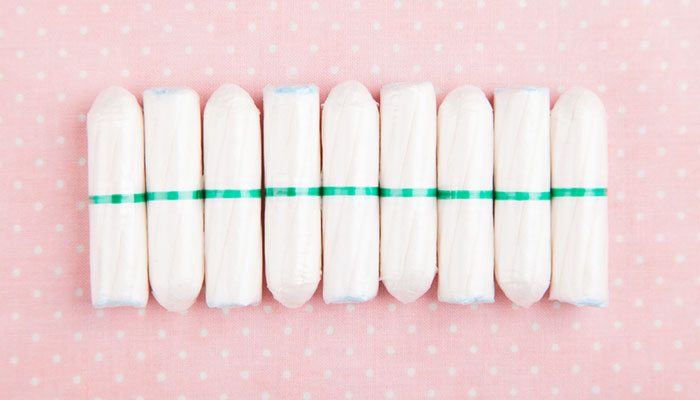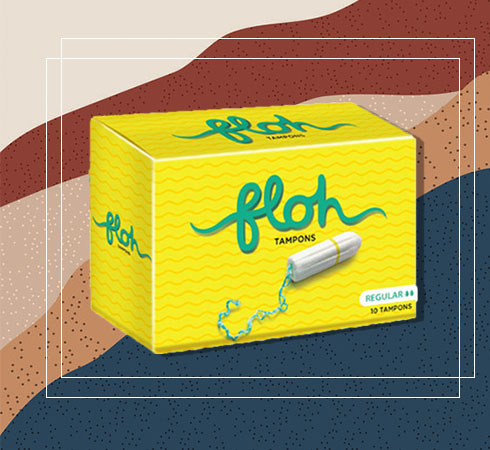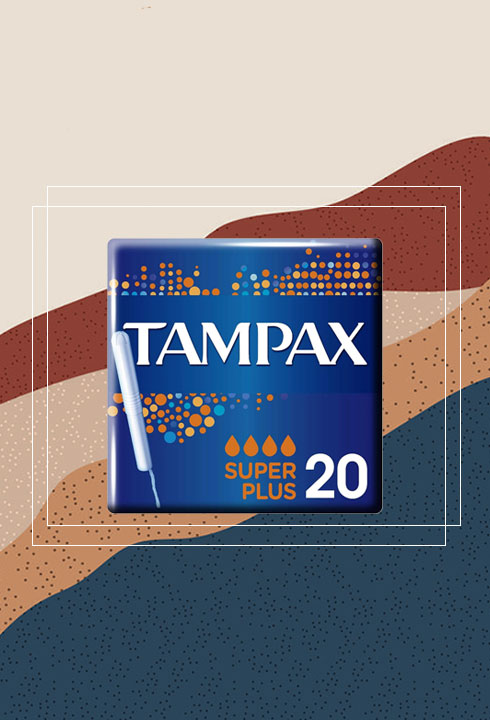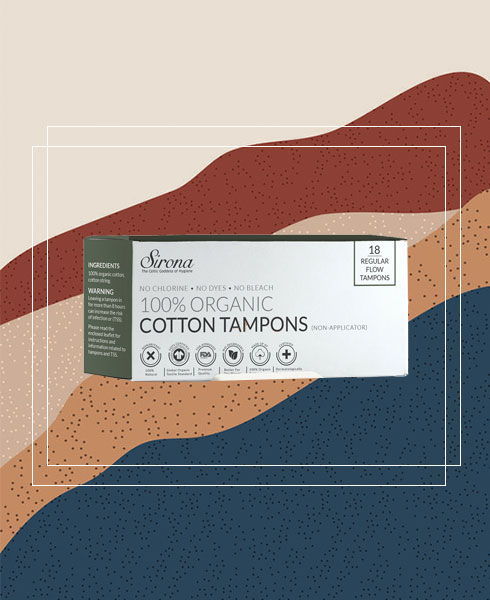
We’ve all been through at least one period-intruded-vacay trajectory. For those who’re yet to get the flow, it means those innocent times when you’re all packed and ready to meet your friends, only to discover your dutiful period has paid you a visit. A subtle way to put a period on your plan, perhaps? Now we know it feels like a bummer, but you can get through it with the right things inside. Yes, you read it right.
Enter: tampons. Love ‘em or hate ‘em, you can’t ignore them. Okay, maybe they look even more intimidating than all your crushes collectively do. In fact, if it’s your first time, even the well laid-out instructions on the tampon box can seem a tad overwhelming to follow. But let’s show you what you’re missing on.
Tampons are little cylindrical female hygiene products designed to fit into the vagina and absorb the menstrual flow.
Most tampons are made of cotton, rayon or a blend of rayon and come in different absorbencies to accommodate light to heavy periods.
These pocket-sized menstrual products are used to keep your monthly blood flow from leaking. Trust us when we say, these little guys can keep you afloat even during your heaviest days.
Tampon Sizes
Blood flow throughout your period cycle is never constant and varies depending on what day of your period you’re on. Also different women may lose different amounts of blood during their cycle. This is why you’ll find tampon sizes that differ to accommodate all kinds of flow.
- Light (Ideal for days with low blood flow, usually at the beginning or end of the cycle)
- Regular (Ideal for days with normal blood flow)
- Super (Ideal for days with heavier blood flow)
Nykaa Recommends: SanNap Premium Digital Regular Tampons (Light to Medium Flow, 20 Pieces), FLOH Tampons – Regular O.B. Pro Comfort Tampons Super - For Heavy Flow (10 Pieces)
Amongst all menstrual care products, pads and tampons rank as the popular ones. Here’s why you should reconsider and switch to tampons, if you already haven’t.
- Unlike pads, tampons don’t love shifting out of place or wrinkling up or throwing you in a panic mode at the middle of the presentation. Ouch!
- From thong bikini to your fav body-hugging LBD, you can wear any outfit without fretting about the visibility of lines under clothing. Cool, huh?
- Tampons don’t give you those weird wet sensations that push your mind in the check or change loop until you’ve finally confirmed it was a false alarm and all is safe.
- Know those rashes around your intimate areas that pads so mercilessly give away as a parting gift? Well, tampons don’t do that
- If you love working out or swimming and are queasy about the possibility of your pad moving out of place too, using a tampon is your best bet.
- If you don’t want your period to be a public affair, it’d help to have pads that don’t make the obvious sound of being pulled off. Fact: pads are noisy. To the rescue: tampon.
- Having your period is alright; constantly being reminded of having one is not. Tampons, when fit in properly cannot be felt unlike pads.
- Tampons don’t make you overly conscious about your flow and don’t smell foul after hours of use. Pads are notorious for doing them all.
- Familiar with the struggle of trying to squeeze in a pad into your jeans’ pocket? Well, with tampons you could slip in even more than one and discreetly enough.
Understanding a Tampon
Did you know, the tampon is not just one piece? Before you get on with grabbing a tampon in your hand, it’s important to get familiar with the other elements involved. This will help you figure out what belongs where and the purpose it serves. Things are just getting easier, we’d say.
1. Tampon
Think of tampon as the main part that fits inside the vaginal canal to absorb the menstrual flow. It’s an absorbent material that’s shaped as a small cylinder and expands when it’s soaked or full.
2. Applicator
The applicator is used to insert and place the tampon inside the vagina. Made of cardboard or plastic material, it surrounds the tampon. It consists of three parts:
- Barrel - The thick part of the applicator surrounding the tampon.
- Grip - The centre of the applicator that’s slip-proof for hold.
- Plunger - The thin part of the applicator that leads to the opening of the tube at the end.
3. String
The string extends outside the tube and is used to gently pull the tampon outside the vagina.
Nykaa Recommends: Tampax Super Plus Tampons With Carborad Applicator, Tampax Pearl Regular Plastic Tampons, Unscented
So umm where do you start? Well, we’re here to help you with the flow.
Step 1: Unwrap the tampon and gently pull on the string to ensure it’s firmly attached.
Step 2: Sit on the toilet with your knees spread and using your thumb and middle finger hold the tampon at its grip at the centre.
Step 3: Placing your index finger at the end of the tube where the string comes out, slide the thick applicator tip into your vagina, aiming towards the back at a 45° angle. The angle is important to make the process smooth and less painful.
Step 4: Keep pushing until the plunger comfortably goes all the way into the barrel. The plunger should now be inside the barrel.
Step 5: Now, holding the grip, gently pull out the applicator and throw it in a bin. The tampon is now inside with only the string hanging outside.
P.S. Please do not flush the applicator.
It’s important to change the tampon every 4 to 6 hours to avoid leakage or bacterial infection. Read on to know how to remove your tampon safely.
Step 1: Sit on the toilet with your knees spread and loosen up. Staying relaxed is key.
Step 2: Using a square of toilet roll, gently pull the string out.
Step 3: The tamspon should slide out promptly. Wrap the used tampon in toilet paper and dump it in a bin.
P.S. If you sense some resistance while inserting or removing the tampon, this is a sign for you to switch to lowest absorbency rated tampons henceforth.
Precautions to take when dealing with tampons:
- No matter how drunk or sleepy you are, never leave in the tampon for more than 8 hours unless you’re building a cozy csouch for bacteria. Leaving your tampon in for extended time periods could result in bacterial infection called the Toxic Shock Syndrome (TSS). The symptoms for the same include, fever, low blood pressure, nausea and headache.
- Stick to low absorbency tampons whenever possible to reduce the risk of TSS.
- Change your tampon frequently, preferably every 4 to 6 hours.
- Avoid scented tampons as the chemicals could cause skin irritation. Switch to organic tampons, they’re kinder to your intimate areas.
- Maintaining hand hygiene when dealing with a tampon is essential. This means washing your hands before and after inserting or removing tampon.
- We advise you against flushing the tampon in the toilet unless you’re looking for an excuse to catch up with your plumber soon. We know, we thought so too.
Nykaa Recommends: Mirai Me Organic Premium Tampons, Sirona Regular Flow 100% Organic Cotton Tampons
FAQs on Tampons
1. Do tampons hurt?
Inserting a tampon into your vagina for the first time may cause pain but this discomfort will fade away with time. That said ensure that you insert the tampon correctly to avoid pain because of wrong placement.
2. Is tampon safe?
A tampon is absolutely safe as long as you follow the precautions well. For example, wearing the tampon for longer than 8 hours can cause bacterial infection which can be easily avoided by simply changing your tampon regularly.
3. What are some popular tampons?
A panty liner offers regular protection against vaginal perspiration, vaginal discharge, light menstrual flow and urinary incontinence. This lightweight pad also helps prevent dampness to ensure optimum vaginal hygiene.
Nykaa Recommends: Everteen 100% Natural Cotton Top Daily Panty Liners 36 Count (Unscented), Masmi Organic Panty Line anatomical




